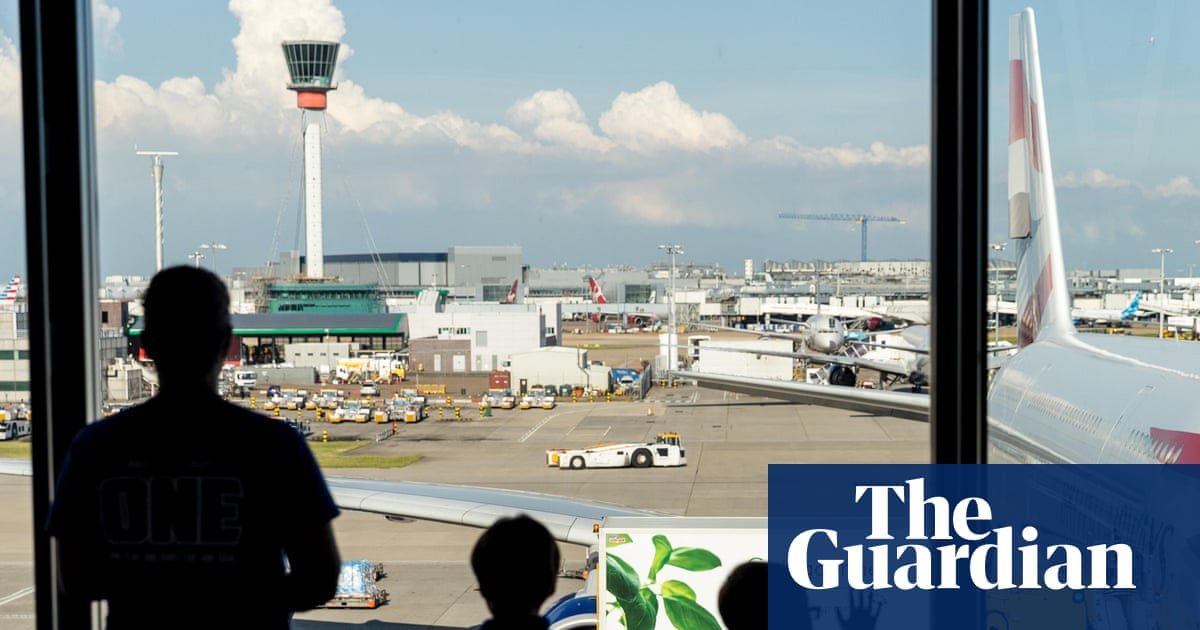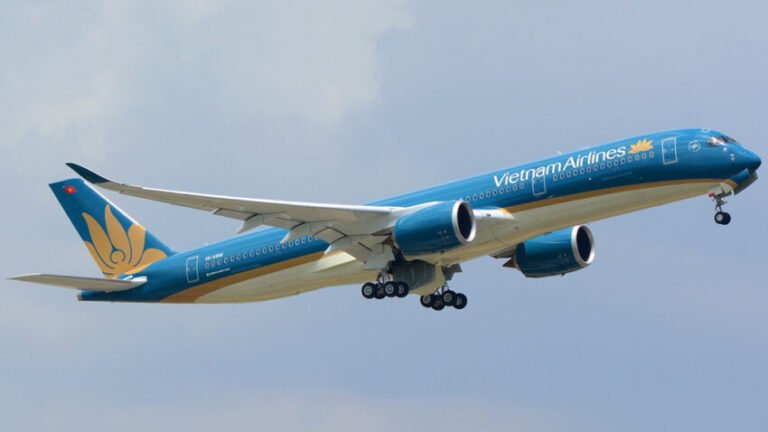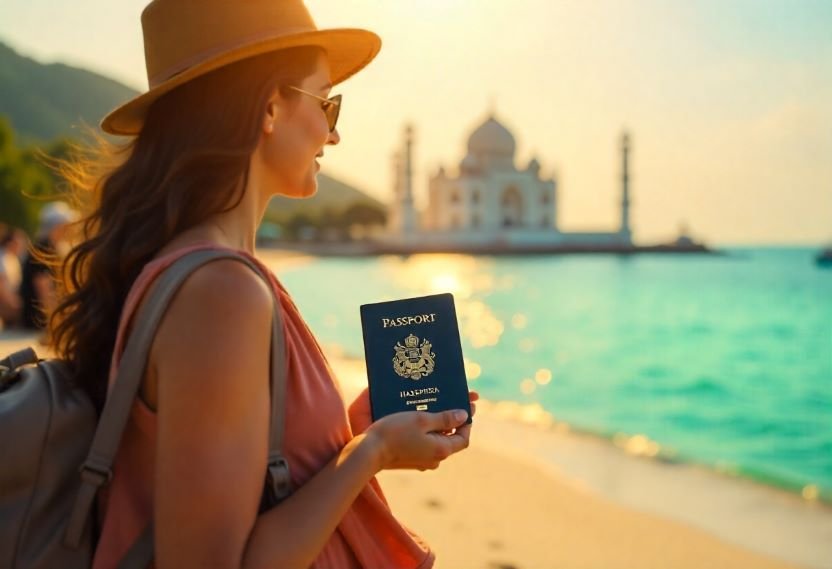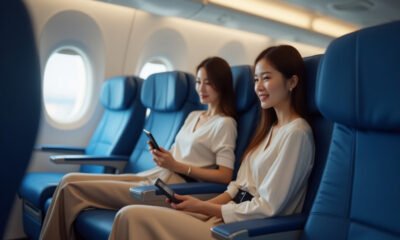Flight Buzz
Indonesia To Boost Tourism With New Direct International Flights, Bypassing Jakarta

Published on
August 8, 2025 |
By: TTW News Desk
President Prabowo Subianto has challenged the Ministry of Transportation to launch direct international flights to tourist hotspots across Indonesia. Skipping Jakarta as the usual stop, this plan hopes to draw more travelers and larger foreign cash flows, giving the tourism sector and the national economy a meaningful lift.
According to Hasan Nasbi, Head of the Presidential Communication Office, the move underscores tourism as a cornerstone of Indonesia’s revenue base. Prabowo’s vision dovetails with the broader goal of a more balanced economy, placing the tourism industry squarely at the leading edge of growth.
Expanding Air Connectivity for Tourism Growth
At a press briefing on August 7, 2025, Nasbi outlined the President’s roadmap to open flights straight to key tourist markets across the archipelago. The present system, which routes almost all foreign flights through Jakarta, will give way to new links that land in regional airports. The approach is designed to streamline journeys and shine a spotlight on lesser-known destinations beyond the capital.
Prabowo’s announcement shows the administration’s pledge to make air travel across Indonesia easier by letting more regional airports welcome international flights. This step is also part of the plan to help local economies by opening up key tourist spots to visitors from abroad.
The President’s plan zeroes in on tourism’s twin prizes: more money for the country and new jobs for the people. Hasan Nasbi pointed out that travel and tourism produce strong income and draw in foreign exchange, both of which fuel national growth.
The push for direct flights is all about smoothing the travel path for tourists from major markets. With easier access, Indonesia strengthens its appeal on the world tourism stage. By opening up regional air access, the state hopes to shine a light on the country’s hidden gems, spreading the wealth of tourism beyond the big city hubs.
Potential Impact on National Revenue and Employment
The President’s strategy focuses on the dual benefits of tourism: boosting national revenue and creating employment opportunities. Hasan Nasbi noted that tourism plays a critical role in generating significant income and attracting foreign exchange, which are crucial for the country’s economic development. As more tourists visit the regions, the local economy benefits from job creation in the hospitality, transportation, and service sectors.
The direct flight initiative aims to streamline international tourism, attracting more visitors from major markets and enhancing Indonesia’s global competitiveness as a tourism destination. By expanding access to regional airports, the government seeks to capitalize on the potential of Indonesia’s lesser-known tourist spots, spreading economic benefits beyond the major urban centers.
New International Airports and Enhanced Connectivity
Indonesia’s strategy to promote tourism is supported by the recent inclusion of five airports in the list of international airports. This update is part of the country’s broader efforts to strengthen international air connectivity and provide more convenient access to tourist destinations. According to Minister of Transportation Decrees Number KM 26 and KM 30 of 2025, five airports have been added to the list, bringing the total number of international airports in the country to 22. This marks an increase from 17 international airports listed in Decree KM 31 of 2024.
Three of the newly designated international airports include Sultan Mahmud Badaruddin II Airport in Palembang, H.A.S. Hanandjoeddin Airport in Bangka Belitung, and Jenderal Ahmad Yani Airport in Semarang. These airports are now prepared to accommodate international flights and will play an important role in making direct international routes more viable.
Two additional airports, Syamsuddin Noor Airport in Banjarmasin and Supadio Airport in Pontianak, were also granted international status. However, the official designation of these airports remains subject to ongoing performance evaluations. The Ministry of Transportation will assess their viability based on criteria such as passenger and cargo traffic, flight frequency, and infrastructure readiness.
Future Prospects and Evaluations
The government has been busy adding new international airports, but leaders stress the task is far from over. Lukman F. Laisa, the Director General of Air Transportation, said every airport will be watched closely. Authorities will check whether the airport can still manage international traffic by looking at flight demand, how ready the operations are, and whether the airport can safely handle more passengers.
Airports that slip below the needed operational and infrastructure standards will lose their international designation. This careful approach lets Indonesia keep improving its tourism network in step with both local and global travel demand.
Enhancing Regional Economic Growth Through Tourism
President Prabowo’s push for more direct international flights also serves a bigger, economic purpose. Better access to quieter, lesser-visited areas means the wealth brought by tourism can be shared more fairly across the country. Many of the new international airports are in provinces that have beautiful sights and cultural riches but have not yet attracted many visitors. These regions are now perfectly positioned to welcome more foreign guests and boost their local economies.
This plan will give local economies a surge by drawing more international tourists to spots outside Jakarta. More foreign visitors should help local businesses grow, particularly in hotels, restaurants, and services, and will open up many new jobs in those areas.
Indonesia’s Bright Future in Global Tourism
Launching new international flights is key to making Indonesia a top player in global tourism. Direct flights to more regional airports, instead of just Jakarta, lets visitors reach amazing destinations more easily. Each new route not only helps local areas earn more but also brings in valuable foreign currency.
Better global connections should also boost visitor numbers and length of stay. More tourists who stay longer spend more money and explore more corners of the archipelago, driving local economies and reinforcing Indonesia’s place as a must-visit gem in Southeast Asia.
Flight Buzz
How a viral post led to Juurnee, a travel site matching passengers with helpers | Consumer affairs

It started as a cry for help that went viral. Rachel Crampton was facing a 23-hour flight with three children under the age of five. Unable to recruit a family member or friend to help out, she took to social media and offered a sizeable cash payment – A$1,000 (about £560 at the time) – to someone who would accompany her on the epic London-to-Sydney flight.
Crampton, a Briton based in Sydney, was inundated with responses and found an “amazing Aussie girl” living in London who was homesick but could not afford the flight back to Australia.
She has since turned that experience into a business which has just launched in the UK after success in Australia. Her website, Juurnee, matches those who want help on a flight with people willing to be their travel companion.
Those needing help could include a parent travelling solo with toddlers, an older person requiring some assistance, someone with a disability, an unaccompanied child, or a nervous flyer.
The companion receives a payment that will cover part, or all, of the cost of their flight.
At the time of writing there were 30 live requests for help on the site. These included a London-to-Switzerland return flight, where the full cost is offered to someone who can help an older passenger who uses a wheelchair; and a London-to-Sydney return trip, with 50% of the flight cost paid, for someone who can help a mother with her one-year-old (there is an option to help just one way).
Crampton says more than 12,000 people have signed up to be a companion and many are qualified teachers, nurses, midwives, childcare workers and others who have clearances to work with children, or qualifications to assist people with disabilities.
But she adds: “You don’t need to be a nanny or nurse – just a decent person willing to lend a hand.”
People seeking a companion can post their offer for free and don’t pay for a successful match. They list the route, the date, the flight details and the sum they are willing to pay someone to travel with them.
They can choose their own payment amount, although the website recommends 50% to 100% of a companion’s flight cost.
Companions sign up for free and can view the offers, but pay a £15-a-year subscription to be able to message people directly to offer their services. They buy their own flights, so, to that extent, the person who needs help is not responsible for them.
Once a companion has applied for an offer, the person requesting help has 14 days to accept and match with them. If selected, the companion will be put in touch with the individual needing help.
Crampton recommends companions get paid at the end of the trip, and that an escrow service is used to hold the payment from when the agreement is struck until 48 hours after landing. “At the moment we are recommending our matched travellers use Escrow.com,” she adds.
There is no official “contract” between the two parties provided by the site – for example, outlining what is expected of the companion – but Crampton says users are free to create one themselves. The website does provide a guide that covers different scenarios.
What if the companion doesn’t turn up at the airport? “We haven’t had this situation crop up just yet,” says Crampton.
If, say, the companion rearranged their flight, they would not be paid their fee. “Hopefully, they would inform Juurnee, or the person they were meant to be helping, in advance, and then we can find another companion,” she says.
Flight Buzz
Vietnam Airlines Rolls Out New Inflight Wi-Fi On International Flights, Taking Travel Connectivity To New Heights

Published on
August 8, 2025 |
By: TTW News Desk
Vietnam Airlines has recently launched a pilot inflight Wi-Fi program on its Airbus A350-900 aircraft to significantly enhance the travel experience for passengers. With international flights, the airline modernizes its services, providing passengers uninterrupted internet access. The installation of modern satellite connectivity systems now allows passengers to browse, message, and work during the flight. Such improvements are essential for Vietnam Airlines to remain a competitor in the international travel market.
Vietnam Airlines Unveils Inflight Wi-Fi Pilot Program to Enhance Customer Experience
Vietnam Airlines has recently rolled out a pilot inflight Wi-Fi program, marking a significant step in enhancing the airline’s customer experience. As part of its ongoing commitment to modernizing travel, the carrier is providing internet access on its international flights, starting with the Airbus A350-900 aircraft equipped with advanced satellite connectivity systems.
The service, initially available on select international routes, allows passengers to stay connected while flying. Travelers can access the Wi-Fi through their personal devices and choose from a range of data packages tailored to various needs. Options include:
- Messaging Package: At just $5, passengers can enjoy unlimited text messaging across platforms, ensuring they stay in touch with friends, family, and colleagues.
- One-Hour Browsing Package: For $10, passengers can browse the internet for an hour, perfect for checking emails or catching up on news during the flight.
- Unlimited Browsing Package: For $20, passengers can access unlimited internet for the entire duration of their journey, enabling them to stream videos, browse the web, and stay connected throughout the flight.
While the Wi-Fi service is currently available only on international routes, the airline has expressed plans to expand it to domestic A350-900 flights in the future, promising broader connectivity for more passengers.
Business class passengers are enjoying a complimentary benefit during the trial phase. They can access the Wi-Fi service for free, providing an added layer of convenience for those traveling in premium cabins. Additionally, Vietnam Airlines is offering all passengers, regardless of cabin class, 15 minutes of free Wi-Fi to use messaging apps. This gesture aims to keep passengers connected without worrying about additional charges during the initial phase of the service.
The Wi-Fi service will be available on select Airbus A350-900 aircraft until December 2025, with further expansion planned for other planes within the Vietnam Airlines fleet. Currently, the airline operates 14 A350-900s, primarily used on long-haul routes, although they also frequently serve flights to Northeast Asia. As the program progresses, more planes in the fleet will be equipped with the necessary technology to offer the service to a wider range of passengers.
Vietnam Airlines’ fleet expansion has been marked by continuous efforts to improve the passenger experience. This Wi-Fi service is part of the airline’s broader strategy to enhance its offerings, making long flights more comfortable and productive for travelers. The new service comes shortly after the airline launched its inaugural nonstop flight from Hanoi to Milan, Italy, at the end of last month. This new route marks a milestone as the airline’s ninth direct European connection, continuing its expansion into international markets and providing more seamless travel options for both leisure and business passengers.
With the introduction of inflight Wi-Fi, Vietnam Airlines is aiming to align itself with global trends in the airline industry, where passengers increasingly expect connectivity during flights. The airline’s move to provide affordable and reliable internet access reflects a growing demand for seamless communication while traveling, allowing passengers to remain productive or entertained during their journeys.
For now, the service remains exclusive to Vietnam Airlines’ Airbus A350-900s, which are used for long-haul flights to destinations such as Japan, South Korea, and Australia. Passengers on these flights can look forward to an enhanced flying experience, where internet connectivity no longer needs to be a source of frustration.
Vietnam Airlines has also hinted at future improvements to its in-flight offerings, with plans to increase the number of aircraft with Wi-Fi capabilities. This means passengers can look forward to a more consistent experience across the airline’s expanding network of international and domestic flights.
As part of its broader strategy, Vietnam Airlines is committed to upgrading its fleet with the latest technologies, ensuring that passengers have a more comfortable and enjoyable experience from check-in to landing. With a strong focus on customer satisfaction and the growing importance of in-flight connectivity, the airline is poised to enhance its competitive edge in the international aviation market.
In the coming months, travelers on Vietnam Airlines can expect further developments in the airline’s in-flight service offerings, including the possibility of more data packages and an expanded Wi-Fi service network. As connectivity becomes an integral part of the modern travel experience, the airline’s decision to roll out inflight Wi-Fi is sure to make its long-haul flights even more appealing to tech-savvy travelers.
For those flying internationally with Vietnam Airlines in the near future, the inflight Wi-Fi program presents an exciting new option to stay connected while in the air, making the journey more enjoyable and efficient. Whether you’re checking emails, catching up on social media, or simply staying in touch with loved ones, the service promises to bring an added layer of convenience and comfort to your flight experience.
Vietnam Airlines has introduced a pilot inflight Wi-Fi program on its Airbus A350-900 aircraft to enhance the travel experience, providing passengers with seamless connectivity on international flights. This move aims to meet the growing demand for reliable internet access while flying, ensuring a more modern and convenient journey.
As Vietnam Airlines continues to innovate, passengers can expect more enhancements that contribute to a seamless, connected, and comfortable travel experience. With the continued rollout of its inflight Wi-Fi service, the airline is not only meeting the needs of today’s travelers but also positioning itself as a leader in providing cutting-edge amenities in the sky.
Flight Buzz
India-Philippines Tourism Strengthens with Free E-Visas and Direct Flights, Paving the Way for Seamless Travel

Published on
August 8, 2025 |
By: TTW News Desk
To strengthen tourism relations, the Philippines and India are significantly improving the travel connection between the two nations. With the issuance of free e-visas for Filipino tourists traveling to India and the launching of direct flights from Delhi to Manila in October of 2025, travelers will greatly benefit from the new opportunities offered for both parties. The aforementioned efforts will greatly improve tourism, ease travel, and open possibilities for business and cultural interactions between the two nations.
Visa Facilitation: A Game-Changer for Tourism
Starting June 8, 2025, Indian tourists will be allowed to visit the Philippines without the need for a visa, a policy the Philippines has recently announced. Indian tourists will be able to visit the Philippines for a maximum of 14 days without a visa. Additionally, holders of valid residence or tourist visas issued by the US, Japan, Australia, the UK, or some other countries have the option to extend their stay to 30 days. This policy increases Indian tourism to the Philippines which features stunning tourist destinations like Palawan, Boracay, and Manila, and also strengthens ties with a neighboring nation.
Furthermore, Philippines made equally bold moves to help India. E-visas will be issued free of charge to Filipinos traveling to India starting in 2025. The aim is to increase tourism from the Philippines to India’s culture, heritage sites, and cities like Delhi, Jaipur, and Mumbai. The structurally simplfied changes and removal of traditional visa application processes will likely lead to a significant increase in bilateral tourism between the two nations.
Such measures of visa ease for both nations are bound to encourage reciprocated travel and proactively foster notice tourism. This is a clear indicator that the two countries are forging a closer partnership that addresses the desire for development, reciprocal advantage, and overarching goals of travel and tourism between them.
Direct Flights: A Boost to Travel Connectivity
In a remarkable developmental update, Air India has announced direct flights between Manila and Delhi starting October 1, 2025. Travelers from both countries will now be able to engage in non-stop exploration of each other’s landscape or culture. Air India will greatly enhance travel between India and the Philippines by operating five flights a week.
Previously, visitors had to deal with connecting flights which added to the time and hassle of their journey. Now, with the new route, tourists and business travelers can make use of the direct flights that will be cutting down travel time. Whether it’s leisure travel to the beaches of the Philippines or business travel to India the new direct non-stop route will be beneficial for everyone.
Air India is positioning itself as the main operator of this new critical air corridor with the launch of these flights. This could also serve as a model for future direct international flights to better integrate India with other Southeast Asian countries.
Impact on Tourism: More Opportunities for Travelers
The introduction of direct flights along with the free e-visa policy is a combination that is likely to promote tourism between India and the Philippines. Filipino tourists will have better access to some of India’s world-famous tourist sites like Taj Mahal, Kerala’s backwaters, and the markets of Rajasthan. Likewise, Indian tourists will have easy access to the Philippines’ white-sand beaches, crystal-clear waters, and tropical paradise Islands like Cebu and Davao.
The seamless e-visa and direct flights also enable cultural exchange which is a powerful means of building understanding and relationship between countries. As a result, there will likely be a greater increase in not just leisure tourism, but also educational and cultural tourism. The two countries have a wealth of history and culture that travelers will be eager to explore.
Economic and Cultural Impact: A Shared Future
The impact reaches further than just tourism; it affects the economy and culture as well. The Philippines and India share strong and deepening business relationships in trade, technology, and education. Increased people-to-people travel will improve networking and collaborative opportunities. The tourism industry will reap the rewards of the enhanced travel, boosting investments in hospitality and tourism infrastructure in both countries.
This plan will especially benefit India’s hospitality sector. Increasing tourist flow from the Philippines will probably occupy the hotels in India’s major tourism hubs. These travelers will be looking for a variety of places to stay, from high-end hotels to more economical options. Also, there is an expanding Filipino market which will provide targeted advertising and tailored travel services, which means hotels and restaurants will be able to reach and meet the needs of this market.
This policy without a visa maximizes access for Indian visitors, many of whom travel for leisure or business. The resort industry will benefit as Indians increasingly seek exotic vacation destinations close to home. Furthermore, businesses in the Philippines from hospitality, retail, and food services will have more Indian travelers looking for unique experiences.
Technology’s Role in Facilitating Travel
Technology plays a vital role in supporting travel, and these policy modifications demonstrate this utility. The implementation of e-visas for tourists from the Philippines showcases a clear case of travel technology simplification. The e-visa system’s online application process coupled with fast approval makes it a secure and efficient method for managing global travel.
Moreover, technology is expected to help travelers with up-to-date information on flights, hotels, and other tourism services. Such tools will assist travelers from either country in meeting the required procedures and planning their trips effortlessly.
Conclusion
The issuance of free e-visas and the commencement of direct flights between India and the Philippines will significantly benefit the tourism industries of both nations. This will completely open the world of travel and enhance travel ease. From the tourism, hospitality, and airline industries, there will be an increased demand which will result in increased revenue and will give businesses the chance to expand their services and offerings.
Bilateral relations between the two countries are now 75 years old, and the two countries are hosting these initiatives to celebrate the relationship. This will serve as a catalyst for the two nations to further their relationship and the tourism industry. India and the Philippines are positioned to gain a lot once obstacles to travel are removed.
-

 Brand Stories3 weeks ago
Brand Stories3 weeks agoBloom Hotels: A Modern Vision of Hospitality Redefining Travel
-

 Brand Stories2 weeks ago
Brand Stories2 weeks agoCheQin.ai sets a new standard for hotel booking with its AI capabilities: empowering travellers to bargain, choose the best, and book with clarity.
-

 Destinations & Things To Do3 weeks ago
Destinations & Things To Do3 weeks agoUntouched Destinations: Stunning Hidden Gems You Must Visit
-

 Destinations & Things To Do2 weeks ago
Destinations & Things To Do2 weeks agoThis Hidden Beach in India Glows at Night-But Only in One Secret Season
-

 AI in Travel3 weeks ago
AI in Travel3 weeks agoAI Travel Revolution: Must-Have Guide to the Best Experience
-

 Brand Stories1 month ago
Brand Stories1 month agoVoice AI Startup ElevenLabs Plans to Add Hubs Around the World
-

 Brand Stories4 weeks ago
Brand Stories4 weeks agoHow Elon Musk’s rogue Grok chatbot became a cautionary AI tale
-

 Brand Stories2 weeks ago
Brand Stories2 weeks agoContactless Hospitality: Why Remote Management Technology Is Key to Seamless Guest Experiences
-

 Asia Travel Pulse1 month ago
Asia Travel Pulse1 month agoLooking For Adventure In Asia? Here Are 7 Epic Destinations You Need To Experience At Least Once – Zee News
-

 AI in Travel1 month ago
AI in Travel1 month ago‘Will AI take my job?’ A trip to a Beijing fortune-telling bar to see what lies ahead | China













You must be logged in to post a comment Login